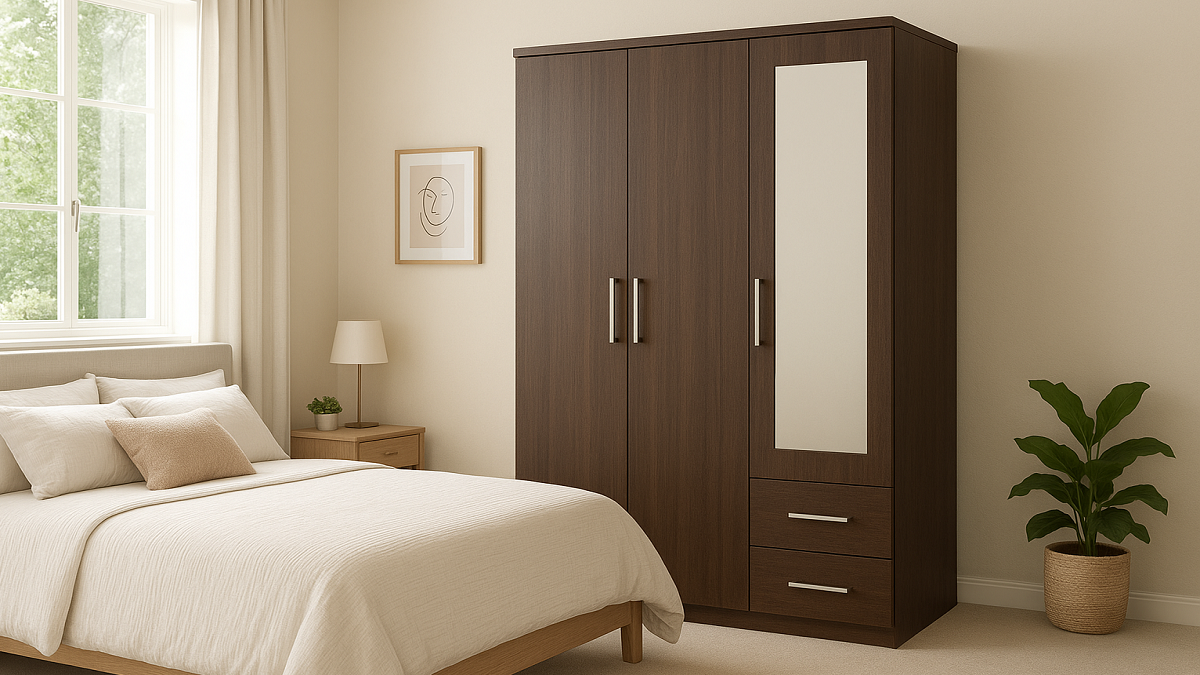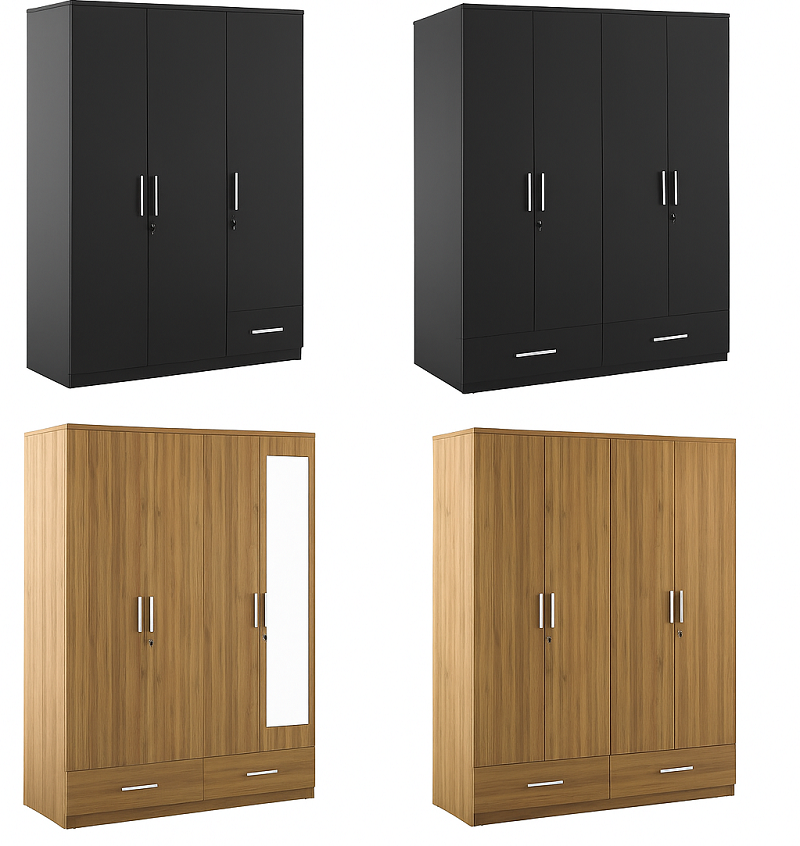Storage is the backbone of any well-organized home, and cupboards serve as the workhorses of domestic organization. Whether you’re planning a kitchen renovation, designing a bedroom wardrobe, or creating storage solutions for any room in your house, thoughtful cupboard design can transform both the functionality and aesthetics of your space. This comprehensive guide explores the essential elements of cupboard design, from initial planning to final styling touches.
Understanding Your Storage Needs (Cupboard Design)
Before diving into design aesthetics, successful cupboard planning begins with a thorough assessment of your storage requirements. Take inventory of what you need to store, considering both current possessions and future needs. Kitchen cupboards must accommodate everything from everyday dishes to small appliances, while bedroom wardrobes need to handle clothing, accessories, and seasonal items.
Consider the frequency of use for different items. Frequently accessed items should be placed at eye level and within easy reach, while seasonal or rarely used items can occupy higher or lower shelves. This principle, known as the “golden zone,” ensures that your most-used items are stored between waist and shoulder height for optimal accessibility.
Planning Your Layout and Dimensions
Effective cupboard design starts with careful measurement and space planning. Standard cupboard depths vary by application: kitchen base cabinets typically measure 24 inches deep, while wall cabinets are usually 12 inches deep. Wardrobe cupboards generally require 24-26 inches of depth to accommodate hanging clothes without crushing them against the back panel.
Height considerations are equally important. Kitchen wall cabinets commonly extend to 8-9 feet in modern homes, maximizing vertical storage while remaining accessible with a step stool. For wardrobes, plan for different hanging lengths: short hanging space for shirts and jackets (36-40 inches), long hanging for dresses and coats (60-70 inches), and shelf space for folded items.
The door opening mechanism significantly impacts your layout. Hinged doors require clearance space to open fully, while sliding doors save space but limit access to half the cupboard at once. Bi-fold doors offer a compromise, providing better access than sliding doors while requiring less clearance than standard hinged doors.
Material Selection: Balancing Durability and Style
The choice of materials fundamentally affects both the longevity and appearance of your cupboards. Solid wood remains the gold standard for durability and natural beauty, with hardwoods like oak, maple, and cherry offering exceptional longevity. However, solid wood comes with a higher price point and requires more maintenance to prevent warping and splitting.
Plywood construction offers an excellent balance of strength and cost-effectiveness. High-quality plywood with hardwood veneers provides stability while maintaining attractive wood grain patterns. Medium-density fiberboard (MDF) presents a budget-friendly option that accepts paint finishes beautifully, though it’s more susceptible to moisture damage than solid wood or plywood.
For modern aesthetics, consider materials like laminate, which offers incredible durability and comes in countless patterns and colors. High-pressure laminates can mimic wood, stone, or fabric textures convincingly while providing superior resistance to scratches, stains, and moisture.
Cupboard Design For Interior Organization Systems
The interior layout of your cupboards determines their practical functionality. Adjustable shelving provides flexibility as your storage needs evolve, while fixed shelves offer greater structural integrity for heavy items. Consider incorporating specialized organizers like pull-out drawers, lazy Susans for corner cupboards, and vertical dividers for storing baking sheets or cutting boards.
Wire baskets and pull-out trays bring items from the back of deep cupboards into easy reach. These systems work particularly well in pantry cupboards where visibility and accessibility of stored goods is paramount. For clothing storage, features like pull-out tie racks, belt hooks, and jewelry drawers can maximize organization within limited space.
Lighting plays a crucial role in cupboard functionality. LED strip lighting under shelves or inside cupboards eliminates dark corners and makes finding items effortless. Motion-activated lights add convenience while conserving energy.
Door Styles and Hardware Selection
Cupboard doors significantly influence the overall aesthetic of your space. Flat-panel or slab doors create clean, modern lines perfect for contemporary interiors. Raised-panel doors offer traditional elegance with their dimensional profiles and shadow lines. Shaker-style doors, with their simple recessed panels, bridge traditional and contemporary styles beautifully.
Glass-front doors add visual lightness and allow display of attractive dishware or collections. Frosted or textured glass provides the openness of clear glass while concealing less attractive storage items. For a unique touch, consider mixing door styles within the same space, using glass fronts for display areas and solid doors for concealed storage.
Hardware selection might seem minor, but it profoundly impacts both function and style. Cabinet pulls and knobs should complement your overall design theme while providing comfortable grip. Longer pulls work better on wider doors and drawers, while knobs suit smaller doors and traditional styles. Consider the finish carefully, as hardware acts as jewelry for your cupboards.
Color and Finish Considerations
Color choices for cupboards should harmonize with your overall interior design while reflecting your personal style. White cupboards remain timelessly popular for their ability to make spaces feel larger and brighter. They also provide a neutral backdrop that accommodates changing decor trends.
Natural wood finishes celebrate the inherent beauty of timber while adding warmth to any space. Light woods like maple and birch create airy, Scandinavian-inspired looks, while darker woods like walnut and mahogany provide rich, sophisticated ambiance.
Bold colored cupboards can serve as statement pieces, but choose colors that will remain appealing over time. Deep blues, forest greens, and charcoal grays offer drama without being overly trendy. Two-tone color schemes, such as white upper cupboards with colored lower cabinets, add visual interest while maintaining balance.
Maximizing Small Spaces (Cupboard Design)
Small spaces require creative cupboard solutions to maximize every square inch of storage. Vertical space becomes precious, so consider extending cupboards to the ceiling and using the top shelves for seasonal or rarely accessed items. Narrow pull-out pantries can fit into surprisingly small spaces while providing substantial storage.
Corner spaces often go underutilized, but corner cupboards with rotating shelves or pull-out systems can transform these awkward areas into valuable storage. Consider installing cupboards in unexpected places like under staircases, around windows, or in hallway alcoves.
Multi-functional furniture pieces, such as storage ottomans or bench seating with built-in cupboards, serve double duty in small spaces. These solutions provide both storage and functionality without consuming additional floor space.
Sustainability and Environmental Considerations
Modern cupboard design increasingly emphasizes environmental responsibility. Choose materials from sustainably managed forests, indicated by certifications like FSC (Forest Stewardship Council). Formaldehyde-free or low-emission products improve indoor air quality, particularly important in kitchens and bedrooms where people spend considerable time.
Consider the longevity of your design choices. Classic styles and quality construction may cost more initially but provide better long-term value by avoiding frequent replacements. Modular systems allow for future reconfiguration without complete replacement.
Local sourcing reduces transportation environmental impact while often providing better quality control and customer service. Many regions have skilled craftspeople who can create custom cupboards with local materials.
Installation and Professional Considerations
While simple shelf installation might be within DIY capabilities, complex cupboard systems often require professional installation. Proper installation ensures doors align correctly, drawers operate smoothly, and the entire system remains stable under load. Professional installers also understand building codes and can handle electrical work for lighting systems.
Budget for installation costs early in your planning process, as professional installation typically costs 20-30% of the cupboard purchase price. However, proper installation protects your investment and ensures optimal functionality.
Maintenance and Longevity
Regular maintenance extends cupboard life significantly. Dust shelves and wipe surfaces regularly with appropriate cleaners for your chosen materials. Wood finishes benefit from occasional conditioning, while laminate surfaces need only gentle cleaning with mild soap.
Check and tighten hardware periodically, as repeated use can loosen screws over time. Adjust hinges if doors begin to sag or misalign. Replace worn drawer slides before they damage the cupboard structure.
Address moisture issues promptly, as humidity can warp wood and damage finishes. Use appropriate ventilation in kitchens and bathrooms to prevent moisture-related problems.
Future-Proofing Your Cupboard Design
Consider how your needs might change over time when designing cupboards. Adjustable shelving accommodates different storage requirements as your lifestyle evolves. Choose classic styles and neutral colors that won’t look dated in five to ten years.
Plan for technology integration where appropriate. Kitchen cupboards might need accommodation for charging stations or smart home devices. Consider how future appliances might affect your storage needs and plan accordingly.
Thoughtful cupboard design represents an investment in your daily quality of life. By carefully considering your needs, choosing appropriate materials, and planning for both current and future requirements, you create storage solutions that enhance both the functionality and beauty of your home. Remember that the best cupboard design balances practical storage needs with aesthetic appeal while staying within your budget and timeline constraints.
Visit Us in Agra
Furniture House Group
# Address: [G-5, Kamla Nagar, Bypass Road, Agra, Uttar Pradesh, 282004]
# Contact: [+91 9758273215]
# Website: [furniturehousegroup.com]
# Open: Monday – Sunday, 10:00 AM to 8:00 PM
# Close: Tuesday


